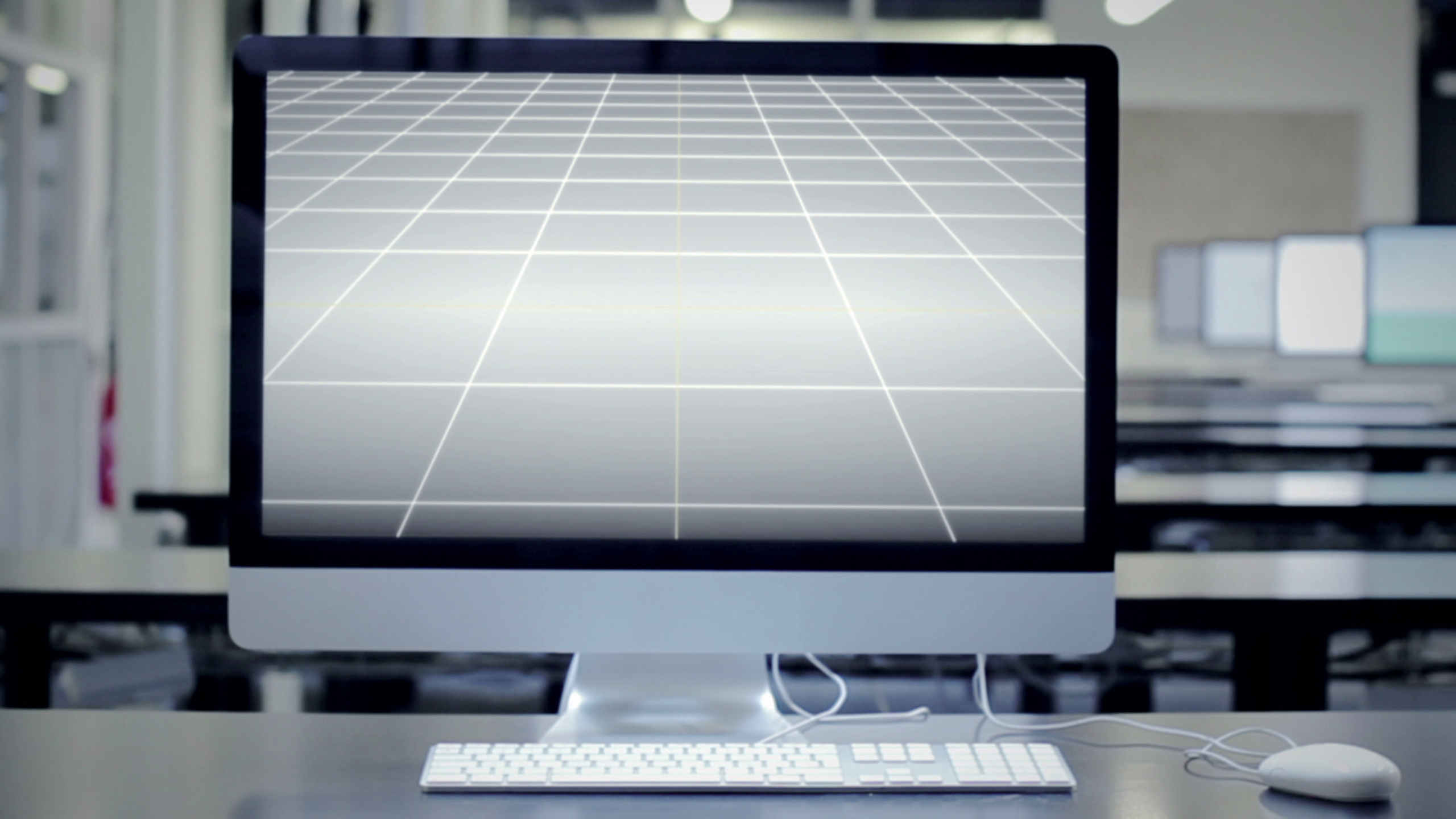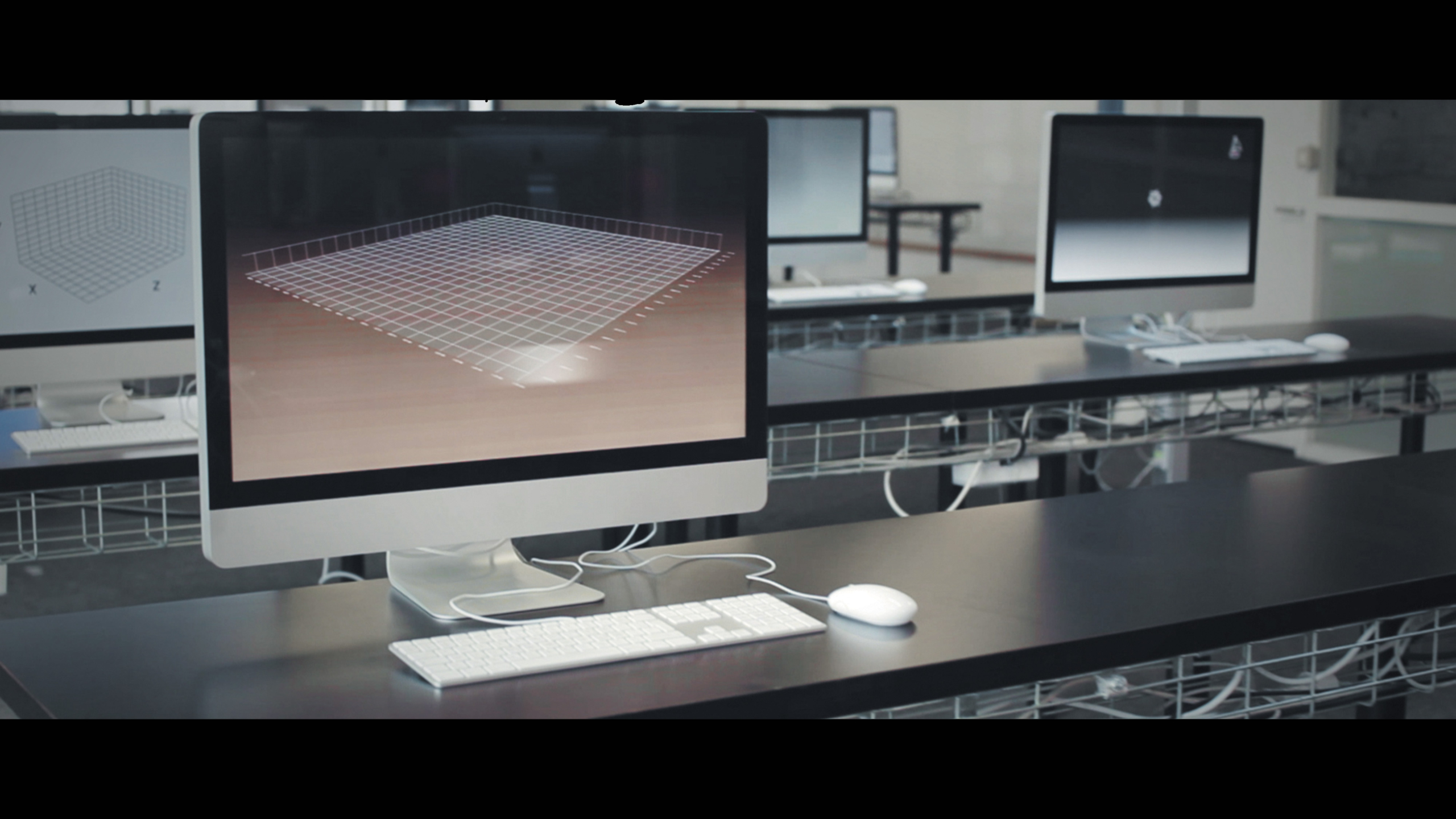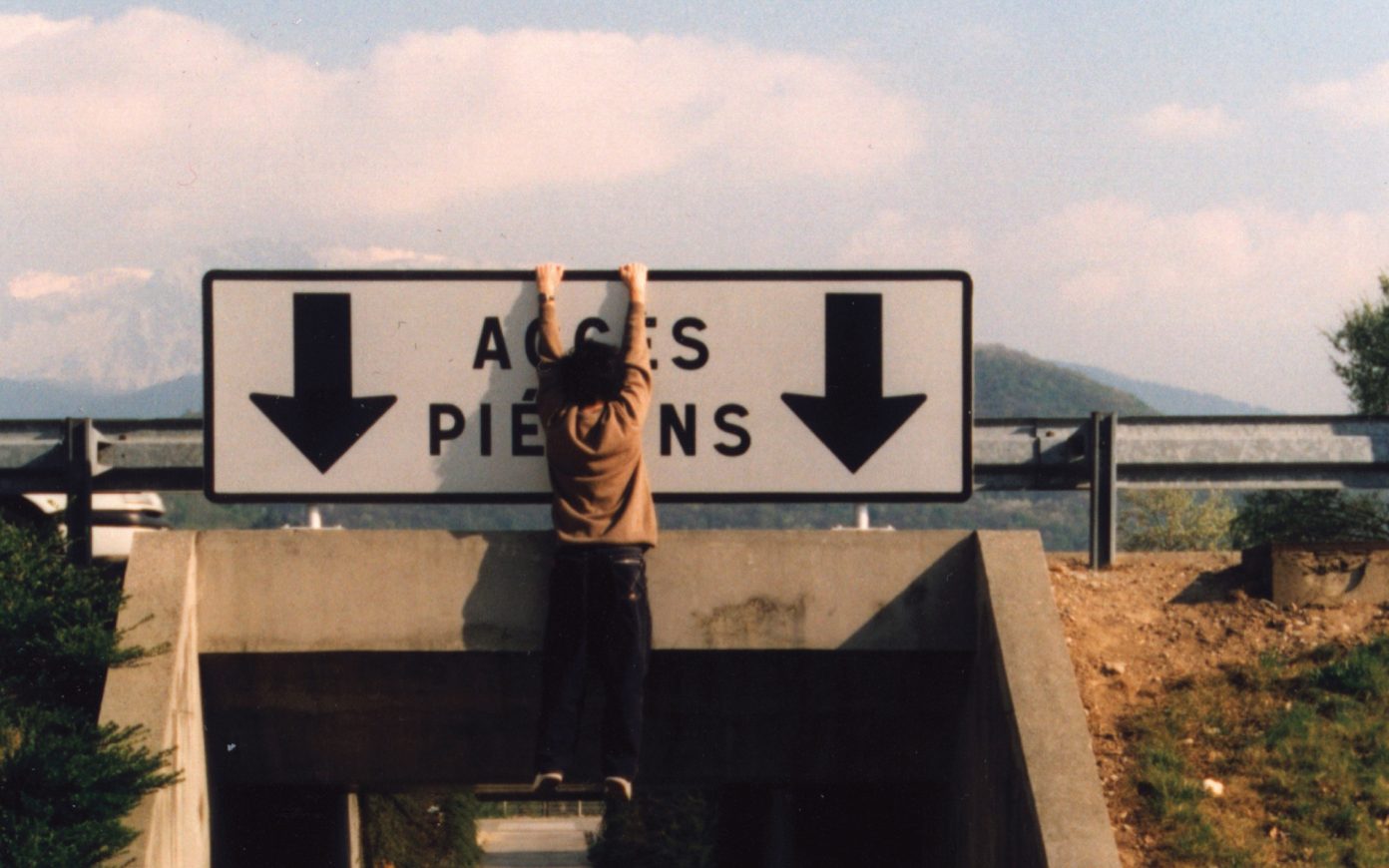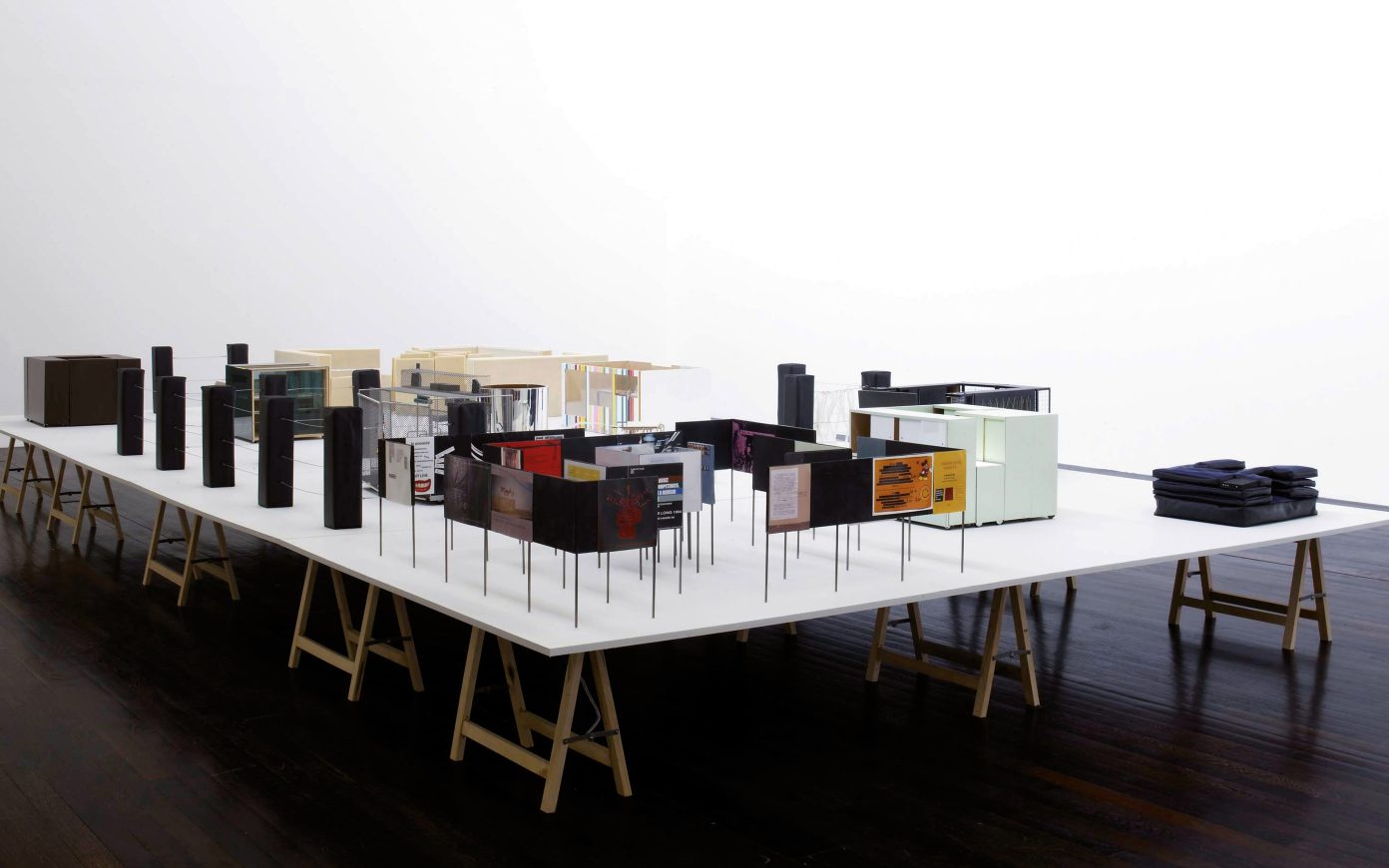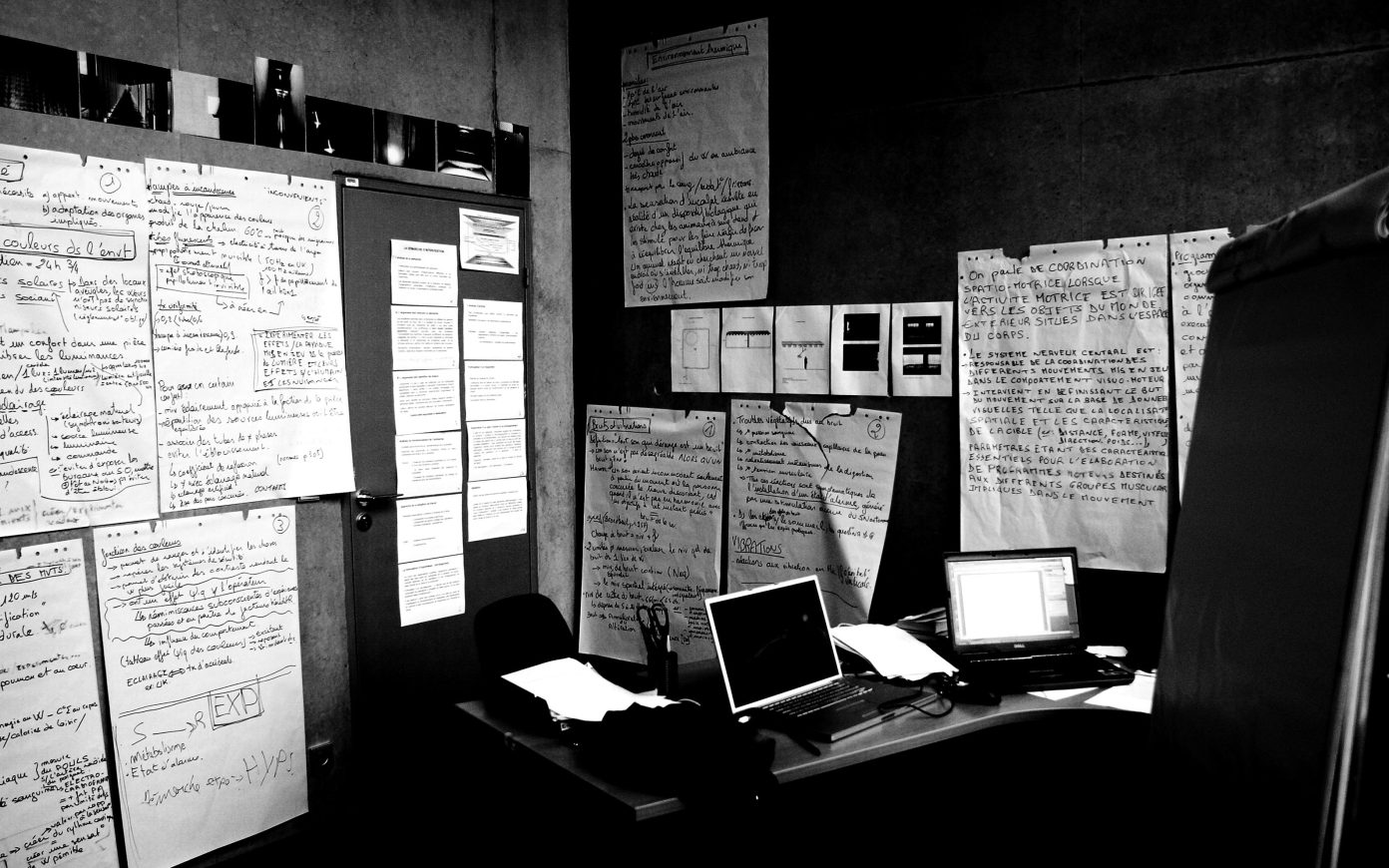Off screen voice – Part One
(Anomalies construites, Julien Prévieux, 2011 – Vidéo HD, 7’41)
Last November, I was officially voted one of the best geo-modelers in the world. The protocol followed by Google to give out «super-modeler» status has just changed, and a grand total of 70 users only can now claim to be one of them, which you will agree is no small feat. Before I discovered how to use architecture modeling software SketchUp, I was grappling with a grave melancholy, I had done no serious work for years, and I woke up every morning with a total and utter lack of interest in the day ahead. When I was younger, I trained as an interior designer but I always wanted to be an architect, and I feel I have now found my calling in 3D modeling for Google Earth. From the moment I first started, as soon as I learnt to push and pull surfaces and edges in the software, I never ceased to make tables, chairs, shelves, cupboards, chests of drawers, houses, bridges, buildings, and skyscrapers. My first model to successfully pass Google’s selection process was shown in Google Earth in 2008. That day, I felt genuine excitement and a certain amount of pride, two feelings shared by all geo-modelers who, like me, and regardless of whether their models are as good as mine, have seen their buildings published. My friends could not understand how I could be so passionate about this project; some would find this activity odd and poked fun at me, calling me the «model modeler,» asking me when I would finally stop playing with my 3D matchsticks. In any case, I always loved matchstick modeling–my dad had started making a 1:20 scale model of the Eiffel Tower. Only the lack of space stopped him from completing it, while impatient, negative and envious people around him had predicted certain failure due to lack of time. I only realized later that, like him, I like the feeling of understanding how buildings and cities are laid out, and why things are as they are … It is a true help when you feel overwhelmed, like architectural catharsis: no need to build a fortress, just populate the world with the world itself. When nothing has yet been created in SketchUp, you have this very flat, very green ground, and the gradations of blue in the sky, and the x, y, and z axes. It may seem difficult to imagine it without having experienced it, but the software’s environment immediately makes you feel like building, and doing so as best as you can. It would be nice to see more geo-modelers in Taiwan, so I will set up a community of users who can build Taipei more quickly. Obviously, I also like the idea of long-term development–I remember the scene in the first Die Hard, when German terrorists invade the Nakatomi Plaza building in Los Angeles. They stand in front of tables covered with models of all the buildings that the company wants to build in the world. At some point, Alan Rickman’s character remembers that Alexander the Great, on his return from the Indus Valley, and faced with the scale of his empire, shed some tears – of joy, because he has everything, and of sadness too, because there is nothing left for him to conquer, and he finds it hard to admit that his work is done. Personally, I am feeling somewhat euphoric, and enjoying still being at the very beginning.
